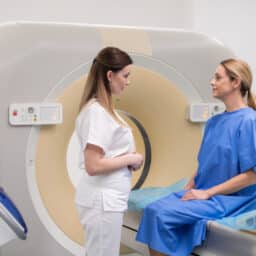How to Care for Your Child Following a Tonsillectomy

A tonsillectomy is a common surgical procedure where the two small glands at the back of the throat, also known as the tonsils, are removed. Tonsils play a role in the immune system by helping to fight off infections, but in some cases, they can become problematic. Chronic infections, frequent sore throats, sleep apnea or…
What to Expect from Thyroid Surgery

Thyroid surgery, also known as thyroidectomy, is a medical procedure performed to remove all or part of the thyroid gland. The thyroid gland, located in the front of the neck, plays a crucial role in regulating various bodily functions, including metabolism, heart rate and temperature. If approaching a thyroid surgery, understanding what to expect can…
What To Know About Turbinate Reduction Recovery

Turbinate reduction surgery is a low-risk intervention designed to alleviate persistent nasal issues such as continual congestion, recurring sinus infections, difficulties with mouth breathing, snoring or persistent nosebleeds. When patients have not seen improvements with other forms of treatment, this procedure is often advised. By targeting the underlying cause of nasal blockages, the surgery can…
Exploring Surgical Options for ENT Conditions: Risks, Benefits and Recovery

ENT conditions are a common presentation in urgent care practices, and sometimes, treatment calls for surgical intervention. Medical advancements have made surgeries to address these issues more effective and safer than ever. In this post, we’ll dive into three common ENT surgeries, ear tube placement, nasal fracture repair, and endoscopic sinus surgery, and take a…
How To Prepare for CT Imaging

A CT (computed tomography) scan is an imaging test that uses a series of X-rays to create detailed images of the bones and soft tissues. CT scans help providers detect internal injuries and diseases that cannot be diagnosed through physical examination alone. If your provider has recommended a CT scan to help diagnose an ear,…